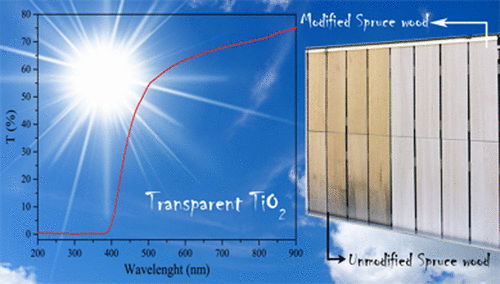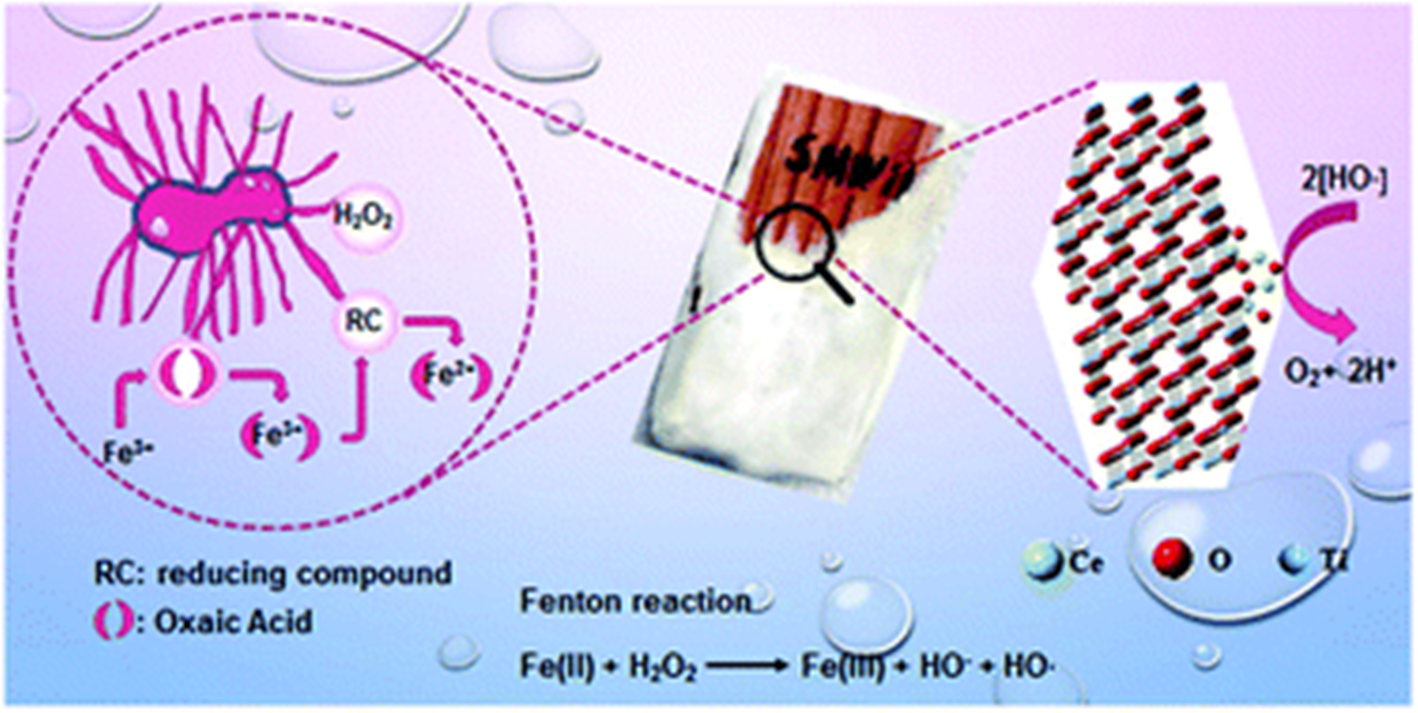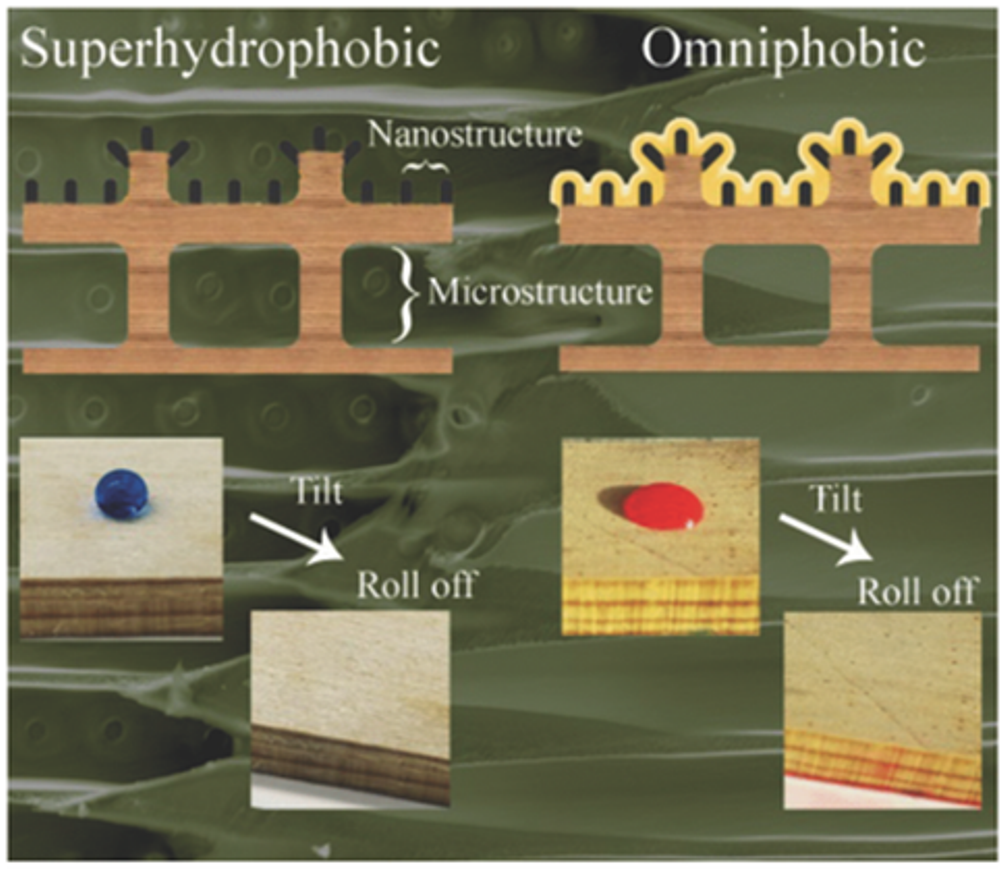Wood-Inorganic Hybrid Materials - Dr. Huizhang Guo
Overview
The increasing demand for sustainable construction materials used in urban areas calls for novel wood properties including UV-stability, flame resistance, and anti-fungal properties, as future bio-economies require the utilization of renewable biomaterials for the design and manufacturing of multi-functional products. The Wood-Inorganic Hybrid Materials group concentrates on addressing these engineering and fundamental challenges by a rational combination of controllable chemical synthesis with the unique structural organization of wood. To develop such materials, a profound understanding of wood as well as expertise in bottom-up material synthesis and characterization are essential.

Research Themes
1. Wood Surface UV protection
Wood materials exposed to sunlight undergo bond cleavage and hydrogen abstraction mainly of the natural polymer lignin, resulting in the formation of radicals or peroxides, which finally leads to discoloration, as well as an increase in hydrophilicity and fungi attack. Semiconductor metal oxides, such as ZnO and TiO2, are widely used in UV protection. A transparent coating is demanded in the application on material surfaces, for which long-term natural appearance is of high relevance. One can increase the transparency of metal oxide coatings by forming a continuous and dense layer. Firstly, by adding a trace amount of additives, we can control the morphology of metal oxides to form a dense thin film on the wood surface. Secondly, we demonstrate that the transparent metal oxide coating can diminish surface deterioration by UV light and preserve the natural appearance of wood. Furthermore, EPR spectroscopy revealed that the coating suppresses free radical generation on wood surfaces upon UV irradiation.
In collaboration with our industrial partners, we are currently scaling up the approaches developed in this research for large-scale wooden façade preservation.

2. Non-biocidal preservation of wood against fungi
The use of wood as an eco-friendly building material requires the development of environmentally benign wood preservatives, which are ideally non-toxic during and after the service life. A novel wood protection method is developed based on a titanium isopropoxide gel and cerium (IV) ammonium nitrate as a stabilizer for the treatment of wood. The hydrolysis of titanium isopropoxide is initiated by the OH-groups of wood, as well as the moisture in the wood cell wall, and subsequently results in a cerium-doped TiO2 layer, which not only seals the wood surface from direct exposure to hydrolytic enzymes but also occludes the micro/nano-pores of the wood cells. The cerium dopant acts as a radical scavenger that quenches the hydroxyl radicals in the initial stage. Our studies revealed that Norway spruce could be better protected against wood decay by brown rot fungi.

3. Conductive wood surface
The structural orientation of wood cells can be used to implement the anisotropic behavior of added material phases. In this research, we coat the wood surface by a transparent and flexible metallic nanowire network followed by a fusion welding with photonic curing. Thereby, an anisotropic conductivity can be achieved, which is originating from the structural organization of the wood body and its surface. Furthermore, the Cu NWs are protected from oxidation or wear by a commercially available paraffin wax—polyolefin, which also results in surface water repellency. The developed processing steps present a facile and flexible routine for applying Cu NW transparent conductors to abundant biomaterials and solve current manufacturing obstacles for corrosion-resistant circuits while keeping the natural appearance of the substrate. It may promote more extensive utilizations of the materials from renewable resources for electronic devices in smart buildings or mobility applications.

4. Multi repellent wood surface
The surfaces resulting from cutting wood in the longitudinal direction are characterized by microsized concave lumen channels and ridges of cell walls. We control the morphology of inorganic nanostructures on wood surface to study wettability and generate superhydrophobic as well as omniphobic wood surfaces. Superhydrophobic wood surfaces are generated by functionalizing the surface of the nanostructure coating with a fluorinated organic silane. The coating process, which allows for tuning the morphology of the crystals, can be utilized to study the relationship between the apparent contact angle and nanoscaled surface roughness introduced by the nanocrystals. Furthermore, we take advantage of the nanostructured wood surface and infuse it with a fluorinated lubricant to generate an omniphobic wood surface, which repels arbitrary liquids (aqueous or organic). The superhydrophobicity serves for self-cleaning wood surfaces, and decreases the problematic liquid water uptake of wood, while the introduction of omniphobicity can open new avenues for the production of scalable materials with relevance in technological areas such as anti-bio-fouling and reduction of frictional drag.

Contact
Schweiz
Wood-Based Energy Materials
Jianguo Sun
In this project, we are going to invent novel applications of wood materials in the smart home which aims to make our living space more comfortable, energy efficient and secure. The smart home requires the integration of stimuli-response materials. To realize it, we will investigate the dielectric, mechanical, piezoelectric and triboelectric properties of the wood-based hybrid materials which can be implemented as the biodegradable active-components in energy harvest devices or sensors. Also, various characterization techniques will be applied to achieve a comprehensive understanding of the hybrid structure and its performance. To conclude, a rational combination with the emerging nano-electronic technologies will continuously gain ground for wood as renewable smart building materials.
Contact
No database information available